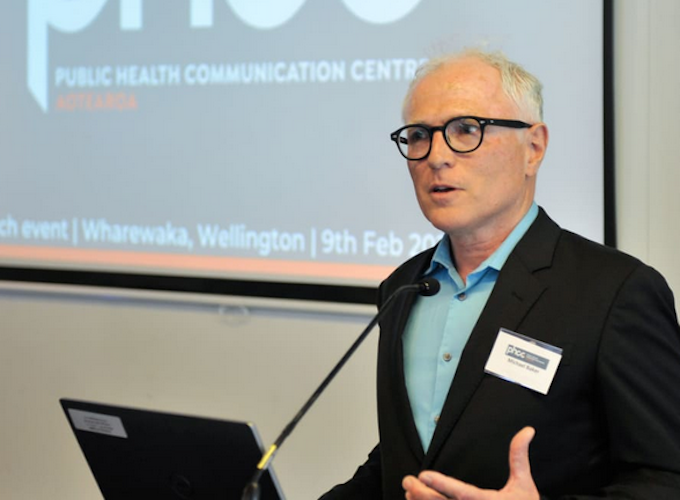Oku taupotu i lalo ha fakamatala fakaTonga
New Zealand is in the grip of a fourth wave of covid but it is predicted to be smaller than previous mass outbreaks.
The most recent analysis from the Public Health Communication Centre at Otago University indicates there could be up to 12,000 hospitalisations and more than a 1000 deaths this year from covid.

Leading epidemiologist Professor Michael Baker said the fourth wave was potentially driven by a rise in the XBB subvariant, which had become dominant in the last two months — exacerbated by waning immunity and people spending more time indoors with the cooler weather.
“This pattern of small to moderate sized waves may indicate what we can expect to see with covid-19 in coming years. But there are still major uncertainties given the potential for this virus to continue to evolve,” he said.
There was growing evidence that subsequent infections tended to be less severe, which was good news — but there was no room for complacency, Professor Baker said.
“It’s a very different virus to influenza.
“With influenza, you might get it once or twice a decade. But with covid 19, it looks like you might get it once or twice a year.
“And each time you get this infection you’re running all of those risks of getting seriously ill, going to hospital or worse, and potentially developing long-term effects.”
Even those who escaped serious illness could be off work some time, which was having an impact on the workforce.
Covid-19 was still the leading cause of death from infectious disease in New Zealand, with 2419 deaths last year.
“Covid-19 is also a major cause of hospitalisation, with more than 22,000 admissions in 2022… and the virus is a source of inequalities with Māori and Pasifika markedly more likely to be admitted to hospital and die from this infection.”
FAKAMATALA FAKATONGA
‘Oku vavalo’i ‘e toe aake mai hano tu’o fa ‘a e Koviti ki Nu’u Sila ni neongo ‘oku pehe ‘e si’is’i pe ‘ikai lahi hange ko ‘ene fua tō mai.
‘Oku mahino mai ‘i ha ‘analasisi mei he Public Health Communication Centre mei he Otago University ‘e a’u ki he tākotoa fale mahaki ‘e toko 12,000 pea mo e mate ‘e 1000 he ta’u ni he Koviti’.
Oku hoko e vailasi ko ha ma’u’anga ‘o e ‘ikai potupotu tatau pea ‘oku hange ‘e hoko ai ‘a e kakai Maori mo Pasifika ke lahi ange hano ‘ave kinautolu ki fale mahaki pe mate mei he mahaki pipihi ko eni, fakatatau kia Palofesa Michael Baker.
Pehe ‘e Baker ko e akenga hono fa ko eni o e Koviti ‘e lava ke mahiki ia tu’u he fotunga fo’ou XBB subvariant, ‘a ia ne fu’u fakaaoao ‘i he mahina ‘e ua kuo hili’ – faka’asili ‘ene kovi ‘aki ‘a e holo ‘a e ‘imiunitii mo e lahi nofo fale ‘a e kakai mo e mokomoko ange a e ‘ea.
Oku talotoloto pe ‘a e peteni ko eni ka hoko mai ‘a ene toe aake ka oku faka’ilonga mai ai ‘e me’a ke tau ‘amanaki ki ai ‘i he ngaahi ta’u ka hoko mai. Ka oku kei lahi pe ‘ikai ha fakapapau’i koeuhi ko e natula ke toe maliuliu ‘a e fotunga ia ‘o e koviti’.
Kuo ‘i ai ‘a e ngaahi fakamooni kuo ‘alu pe taimi mo hono tanaki mai ‘o pehe ko ha toe pihia ki mui mai ‘e ‘ikai fu’u fakatu’umaki ‘a ia ko e ongoongo lelei ia – ka ‘oku ikai ha loki ki he fakata’eta’ekuhaa’, ko e lau ia ‘a Palofesa Baker.
Oku kehe ‘aupito ‘a e vailasi ia ko eni mei he influenza.
Ko e influrnza t eke ala ma’u tu’o taha pe tu’o ua ‘i ha ta’u ‘e 10 ka ko e Koviti 19 ‘oku ngali t eke ma’u tu’o taha pe tu’o ua ‘i he ta’u.
Oku kei hoko pe ‘a e Koviti 19 ko e mahaki lahi taha ia kuo hoko ai ‘a e mate fakatokolahi ‘i Nu’u Sila ‘a ia ko e toko 2419 he ta’u kuo ‘osi.







